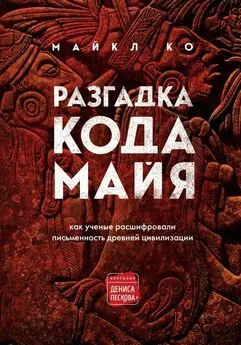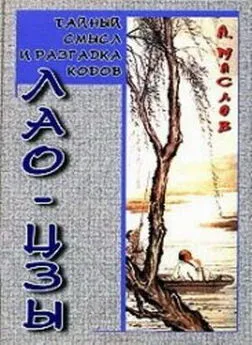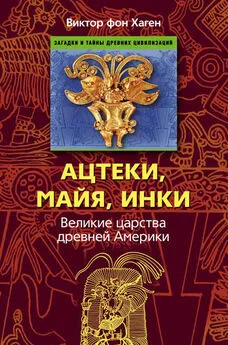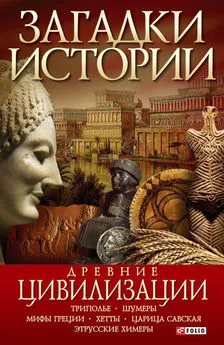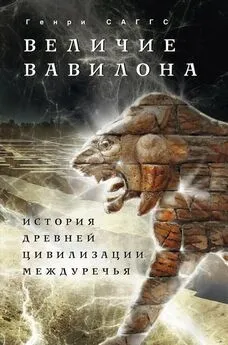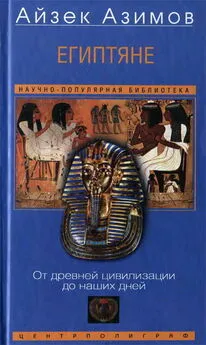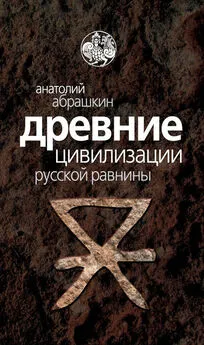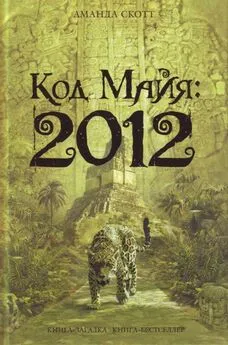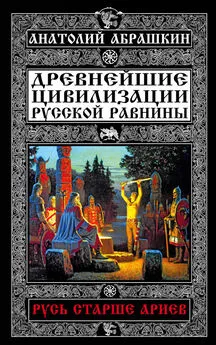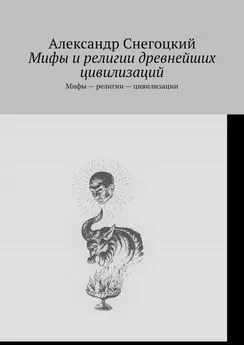Майкл Ко - Разгадка кода майя: как ученые расшифровали письменность древней цивилизации
- Название:Разгадка кода майя: как ученые расшифровали письменность древней цивилизации
- Автор:
- Жанр:
- Издательство:Литагент 5 редакция «БОМБОРА»
- Год:2021
- Город:Москва
- ISBN:978-5-04-157070-5
- Рейтинг:
- Избранное:Добавить в избранное
-
Отзывы:
-
Ваша оценка:
Майкл Ко - Разгадка кода майя: как ученые расшифровали письменность древней цивилизации краткое содержание
Ко лично знал Кнорозова и многое сделал для популяризации его работ еще во времена «железного занавеса». Его книга рассказывает о прорывах и трудностях, сопровождавших одно из величайших интеллектуальных достижений XX века.
В формате PDF A4 сохранен издательский макет.
Разгадка кода майя: как ученые расшифровали письменность древней цивилизации - читать онлайн бесплатно ознакомительный отрывок
Интервал:
Закладка:
Schenkel, Wolfgang 1976. The structure of hieroglyphic script // RAIN 15: 4–7.
Seler, Eduard 1892. Does there really exist a phonetic key to the Maya hieroglyphic writing? // Science 20 (499): 121–122.
Seler, Eduard 1893. Is the Maya hieroglyphic writing phonetic? // Science 21 (518): 6–10.
Seler, Eduard 1902–23. Gesammelte Abhandlungen zur Amerikanischen Sprach- und Alterthunskunde . 5 vols. Berlin: Ascher & CO.
Sharer, Robert J., and Loa Traxler 2006. The Ancient Maya . Stanford: Stanford University Press (6-е издание обощающей работы, впервые опубликованной в 1946 году Сильванусом Морли).
Solomon, Char 2002. Tatiana Proskouriakoff: Interpreting the Ancient Maya . Norman: University of Oklahoma Press.
Spinden, Herbert J. 1916. Portraiture in Central American art // Holmes Anniversary Volume , ed. F. W. Hodge, 434–450. Washington: J. W. Bryant Press.
Stephens, John L. 1841. Incidents of Travel in Central America, Chiapas, and Yucatan. 2 vols. London: John Murray.
Stephens, John L. 1843 Incidents of Travel in Yucatan . 2 vols. London: John Murray.
Stone, Andrea J. 1995. Images from the Underworld. Naj Tunich and the Tradition of Maya Cave Painting . Austin: University of Texas Press.
Stone, Andrea, and Marc Zender 2011. Reading Maya Art: A Hieroglyphic Guide to Ancient Maya Painting and Sculpture . London and New York: Thames & Hudson.
Stuart, David 1979. Some thoughts on certain occurrences of the T565 glyph element at Palenque // Tercera Mesa Redonda de Palenque, Vol. IV , ed. M. G. Robertson, 167–171. Pebble Beach, Calif.: Robert Louis Stevenson School.
Stuart, David 1984. A note on the “hand-scattering” glyph // Phoneticism in Mayan Hieroglyphic Writing , ed. J. S. Justeson and L. Campbell, 307–310. Albany: Institute for Mesoamerican Studies.
Stuart, David 1985a. The “count of captives” epithet in Classic Maya writing // Fifth Palenque Round Table, Vol . 7, ed. V. Fields, 97–101. Austin: University of Texas Press.
Stuart, David 1985b. The Yaxhá Emblem Glyph as Yax-ha. Research Reports on Ancient Maya Writing 1. Washington.
Stuart, David 1986a. A glyph for “stone incensario.” Copán Note 2. Austin.
Stuart, David 1986b. The hieroglyphic name of Altar U. Copán Note 4. Austin.
Stuart, David 1987. Ten phonetic syllables. Research Reports on Ancient Maya Writing 14. Washington.
Stuart, David 1988. The Río Azul cacao pot: epigraphic observations on the function of a Maya ceramic vessel // Antiquity 62: 153–157.
Stuart, David 1989. Hieroglyphs on Maya vessels // The Maya Vase Book, Vol . 1, ed. J. Kerr, 149–160. New York: Justin Kerr.
Stuart, David n. d. The Maya Artist. An Epigraphic and Iconographic Study . Senior Thesis, Princeton University.
Stuart, David, and Stephen Houston 1994. Classic Maya Place Names . Washington: Dumbarton Oaks.
Stuart, George E. 1981. Maya art treasures discovered in cave // National Geographic 160 (2): 220–235.
Stuart, George E. 1989. The beginning of Maya hieroglyphic study: contributions of Constantine S. Rafinesque and James H. McCulloch, Jr. Research Reports on Ancient Maya Writing 29. Washington.
Stuart, George E. 1992. Quest for decipherment, a historical and biographical survey of Maya hieroglyphic investigation // New Theories on the Ancient Maya , ed. E. C. Danien and R. Sharer, 1–63. Philadelphia: University Museum.
Stuart, George E., and Gene S. Stuart 1977. The Mysterious Maya . Washington: National Geographic Society.
Taube, Karl A. 1989. The maize tamale in Classic Maya diet, epigraphy, and art // American Antiquity 54 (1): 31–51.
Taube, Karl A., and Bonnie L. Bade 1991. An appearance of Xiuhtecuhtli in the Dresden Venus pages. Research Reports on Ancient Maya Writing 35. Washington.
Tedlock, Dennis 1985. Popol Vuh . New York: Simon and Schuster.
Teeple, John E. 1925. Maya inscriptions: Glyphs C, D, and E of the Supplementary Series // American Anthropologist 27: 108–115.
Teeple, John E. 1930. Maya astronomy. Carnegie Institution of Washington, Publ . 403 ( Contrib . 2). Washington.
Termer, Franz 1949. Eduard Seler // El México Antiguo 7: 29–57.
Thomas, Cyrus 1882. A study of the Manuscript Troano, Contributions to North American Ethnology 4: 1–237.
Thomas, Cyrus 1892a. Key to the Maya hieroglyphs // Science 20 (494): 44–46.
Thomas, Cyrus 1892b. Is the Maya hieroglyphic writing phonetic? // Science 20 (505): 197–201.
Thomas, Cyrus 1893. Are the Maya hieroglyphics phonetic? // American Anthropologist n. s. 6: 241–270.
Thomas, Cyrus 1903. Central American hieroglyphic writing // Annual Report of the Smithsonian Institution for 1903: 705–721.
Thompson, J. Eric S. 1929. Maya chronology: Glyph G of the Lunar Series // American Anthropologist 31: 223–231.
Thompson, J. Eric S. 1934. Maya chronology: the fifteen tun glyph. Carnegie Institution of Washington, Publ . 436 ( Contrib . 11). Washington.
Thompson, J. Eric S. 1935. Maya chronology: the correlation question. Carnegie Institution of Washington, Publ . 456 ( Contrib . 14). Washington.
Thompson, J. Eric S. 1937. A new method of deciphering Yucatecan dates with special reference to Chichén Itzá. Carnegie Institution of Washington, Publ . 483 ( Contrib . 22). Washington.
Thompson, J. Eric S. 1941. Dating of certain inscriptions of non-Maya origin. Carnegie Institution of Washington, Theoretical Approaches to Problems 1. Cambridge.
Thompson, J. Eric S. 1943a. Maya epigraphy: directional glyphs in counting. Carnegie Institution of Washington, Notes on Middle American Archaeology and Ethnology 20. Cambridge.
Thompson, J. Eric S. 1943b. Maya epigraphy: a cycle of 819 days. Carnegie Institution of Washington, Notes on Middle American Archaeology and Ethnology 22. Cambridge.
Thompson, J. Eric S. 1944. The fish as a symbol for counting and further discussion of directional glyphs. Carnegie Institution of Washington, Theoretical Approaches to Problems 2. Cambridge.
Thompson, J. Eric S. 1950. Maya Hieroglyphic Writing: An Introduction . Washington: Carnegie Institution of Washington.
Thompson, J. Eric S. 1953a. Maya Hieroglyphic Writing: a rejoinder // International Journal of American Linguistics 19 (2): 153–154.
Thompson, J. Eric S. 1953b. Review of “La antigua escritura de los pueblos de America Central,” Etnografía Soviética , octubre de 1952, by Y. V. Knorosov // Yan 2: 174–178. Mexico City.
Thompson, J. Eric S. 1958. Research in Maya hieroglyphic writing // Pan American Union, Social Science Monographs 5: 43–52. Washington.
Thompson, J. Eric S. 1959. Systems of hieroglyphic writing in Middle America and methods of deciphering them // American Antiquity 24 (1): 349–364.
Thompson, J. Eric S. 1962. A Catalog of Maya Hieroglyphs . Norman: University of Oklahoma Press.
Thompson, J. Eric S. 1963a. Maya Archaeologist . Norman: University of Oklahoma Press.
Thompson, J. Eric S. 1963b. Rise and Fall of Maya Civilization . Norman: University of Oklahoma Press.
Thompson, J. Eric S. 1970a. Maya History and Religion . Norman: University of Oklahoma Press.
Thompson, J. Eric S. 1970b. The Bacabs: their portraits and glyphs // Papers of the Peabody Museum of Archaeology and Ethnology, Harvard University, 61: 471–485.
Thompson, J. Eric S. 1971. Maya Hieroglyphic Writing: An Introduction . 3rd edition. Norman: University of Oklahoma Press.
Thompson, J. Eric S. 1972a. Maya Hieroglyphs Without Tears . London: British Museum.
Thompson, J. Eric S. 1972b. A Commentary on the Dresden Codex . Philadelphia: American Philosophical Society.
Thompson, J. Eric S. 1976. Review of The Maya Scribe and His World by Michael D. Coe // The Book Collector 26: 64–75. London.
Tozzer, Alfred M. 1907. Ernst Förstemann // American Anthropologist n. s., 9: 153–159.
Tozzer, Alfred M. 1919. Joseph Thompson Goodman // American Anthropologist n. s. , 21: 441–445.
Tozzer, Alfred M. 1931. Alfred Percival Maudslay // American Anthropologist n. s., 33: 403–413.
Tozzer, Alfred M. 1941. Landa’s Relación de las Cosas de Yucatán. Papers of the Peabody Museum of Archaeology and Ethnology, Harvard University , 18. Cambridge.
Trager, George L. 1974. Writing and writing systems // Current Trends in Linguistics 12: 373–496. The Hague.
Trik, Aubrey S. 1963. The splendid tomb of Temple I, Tikal, Guatemala // Expedition 6 (1): 2–18.
Turner, B.L. 1978. Ancient agricultural land use in the Maya lowlands // Pre-Hispanic Maya Agriculture , 163–183. Austin: University of Texas Press.
Tylor, Edward B. 1881. Anthropology . New York: D. Appleton & Co.
Ulving, Tor 1955. A new decipherment of the Maya glyphs // Ethnos 20: 152–158.
Valentini, Philipp J. J. 1880. “The Landa alphabet,” a Spanish fabrication // Proceedings of the American Antiquarian Society 75: 59–91. Worcester.
Villela, Khristian n. d. J. Eric S. Thompson’s first 25 years: Argentine politics and the Maya collapse. Class paper for Topics in Pre-Columbian Art (Prof. Mary Miller), Yale University, 1989.
Vogt, Evon Z. 1971. The genetic model and Maya cultural development // Desarollo cultural de los maya , ed. E. Z. Vogt and A. Ruz L., 9–48. Mexico City: Universidad Nacional Autónoma, Centro de Estudios Mayas.
von Hagen, Victor Wolfgang 1947. Maya Explorer: John Lloyd Stephens and the Lost Cities of Central America and Yucatan . Norman: University of Oklahoma Press.
Waldeck, Jean Frédéric 1838. Voyage pittoresque et archéologique dans de Province d’Yucatan pendant les années 1834 et 1836 . Paris.
Wang, William S. – Y. 1981. Language structure and optimal orthography // Perception of Print . ed. O.J.L. Tzeng and H. Singer, 223–236. Hillside, N.J.: Lawrence Erlbaum Associates.
Webster, David (ed.) 1989. House of the Bacabs, Copán, Honduras . Washington: Dumbarton Oaks Research Library and Collections.
Webster, David 2002. The Fall of the Ancient Maya . London and New York: Thames & Hudson.
White, Christine D., and Henry P. Schwarcz 1989. Ancient Maya diet: as inferred from isotopic elemental analysis of human bone. Journal of Archaeological Science 16: 457–474.
Whorf, Benjamin L. 1933. The phonetic value of certain characters in Maya writing. Papers of the Peabody Museum of Archaeology and Ethnology, Harvard University , 13 (2).
Whorf, Benjamin L. 1935. Maya writing and its decipherment // Maya Research 2 (4): 367–382. New Orleans.
Willey, Gordon R. 1979. John Eric Sidney Thompson, 1898–1975 // Proceedings of the British Academy 65: 783–798.
Библиография к русскому изданию
Гельб И. Е. Опыт изучения письма (Основы грамматологии). М.: Радуга, 1982.
Гордон С. Г. Забытые письмена: Открытие и дешифровка. СПб.: Евразия, 2002.
Читать дальшеИнтервал:
Закладка:
